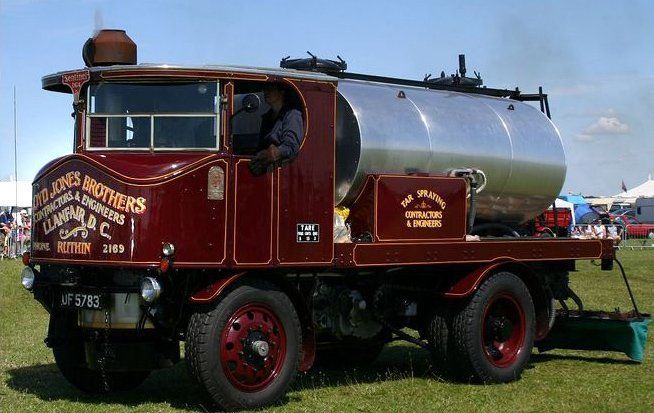|
|
Old Steam Trucks
|
Double-clutching allows the driver to control the engine and transmission revolutions to synchronize, so that a smooth shift can be made; for example, when upshifting, the accelerator pedal is released and the clutch pedal is depressed while the gear lever is moved into neutral, the clutch pedal is then released and quickly pushed down again while the gear lever is moved to the next higher gear. Finally, the clutch pedal is released and the accelerator pedal pushed down to obtain required engine speed. Although this is a relatively fast movement, perhaps a second or so while transmission is in neutral, it allows the engine speed to drop and synchronize engine and transmission revolutions relative to the road speed. Downshifting is performed in a similar fashion, except the engine speed is now required to increase (while transmission is in neutral) just the right amount in order to achieve the synchronization for a smooth, non-collision gear change. "Skip changing" is also widely used; in principle operation is the same as double-clutching, but it requires neutral be held slightly longer than a single-gear change.
Common North American setups include 9, 10, 13, 15, and 18 speeds. Automatic and semi-automatic transmissions for heavy trucks are becoming more and more common, due to advances both in transmission and engine power. In Europe, 8, 10, 12 and 16 gears are common on larger trucks with manual transmission, while automatic or semi-automatic transmissions would have anything from 5 to 12 gears. Almost all heavy truck transmissions are of the "range and split" (double H shift pattern) type, where range change and so‑called half gears or splits are air operated and always preselected before the main gear selection.
• Frame
A truck frame consists of two parallel boxed (tubular) or C‑shaped rails, or beams, held together by crossmembers. These frames are referred to as ladder frames due to their resemblance to a ladder if tipped on end. The rails consist of a tall vertical section (two if boxed) and two shorter horizontal flanges. The height of the vertical section provides opposition to vertical flex when weight is applied to the top of the frame (beam resistance). Though typically flat the whole length on heavy duty trucks, the rails may sometimes be tapered or arched for clearance around the engine or over the axles. The holes in rails are used either for mounting vehicle components and running wires and hoses, or measuring and adjusting the orientation of the rails at the factory or repair shop.
|
|









